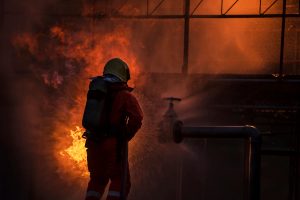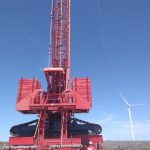At the height of the global pandemic, as little as 24 percent of the usual amount of safety training was available for the world’s wind-power workforce.
Government lockdowns almost everywhere rendered schools, colleges, and specialist training centers unable to provide courses, despite the fact our workforce had a continuing obligation to keep wind turbines spinning.
Now, as centers in the United States are reopening for safety training and refresher courses, which keep workers’ skills in life saving or working at height up to speed, several trends and best practices have emerged.
Global Wind Organisation (GWO) has maintained close contact with its network of more than 350 training providers, 17 of which operate in the U.S. and Canada. The objective has been to share best practice and innovation among this global community. We’ve held weekly webinars with GWO providers in Taiwan who shared their experience dealing with SARS in 2003; a large center in Poland which was the only country in Europe to continue training during the Pandemic; and Siemens Gamesa Renewable Energy’s Orlando, Florida, training center, which has used techniques borrowed from nuclear decontamination processes to reopen its operations safely for all concerned.
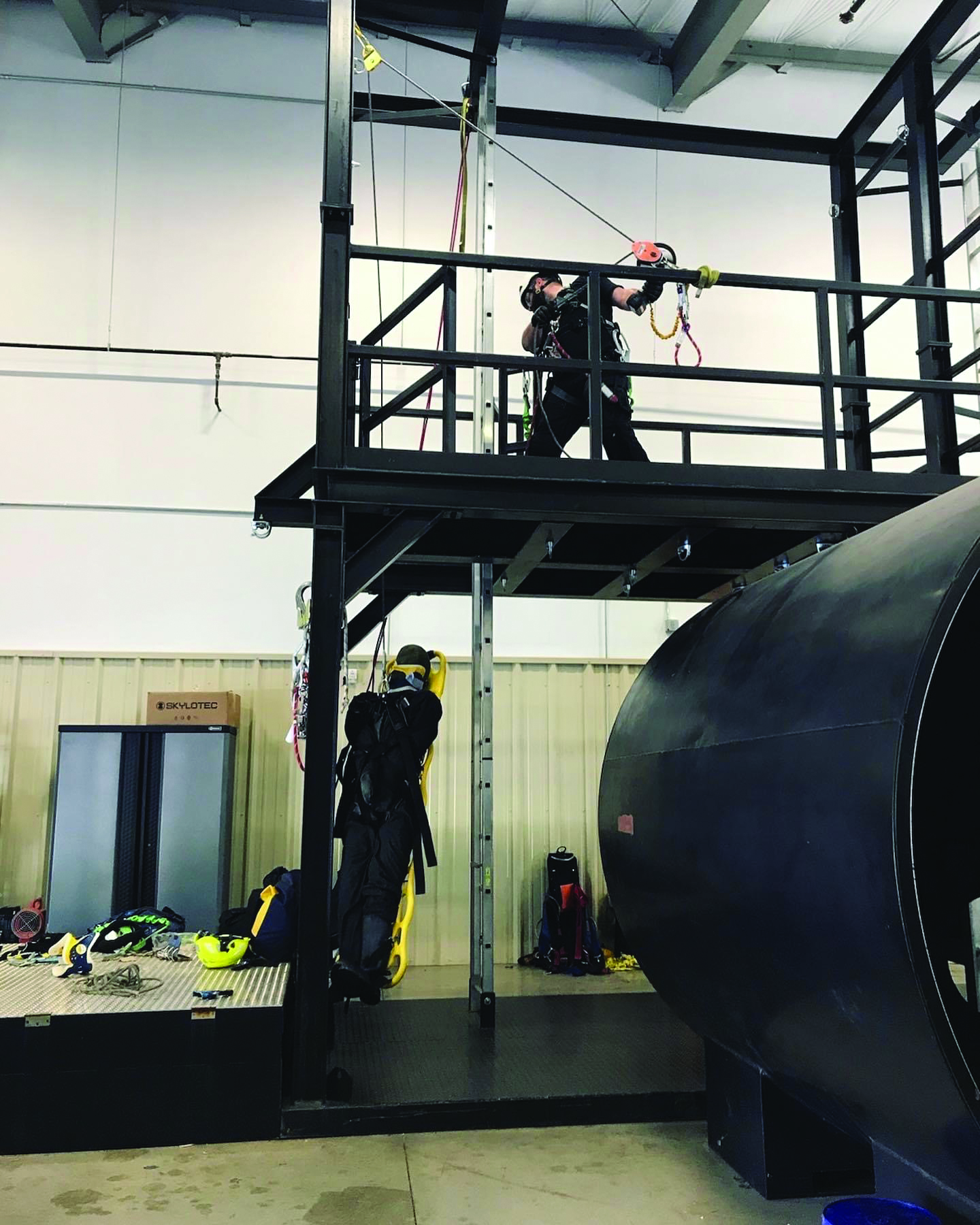
We held conversations with three GWO certified training providers to listen to details of their reopening action plans at locations at the center of the wind industry in the United States:
- ENSA North America, Amarillo, Texas: Opened April 6.
- High Plains Technology Center (HPTC), Woodward, Oklahoma: Opened May 4.
- Safety Technology, Sweet Water, Texas: Opened May 22.
It is important to point out that the wind industry is expanding rapidly, and all three of these training centers have a healthy backlog of companies and individuals who want and need safety training.
Beginning with a look at behaviors
“The whole approach to reopening starts with the understanding that people and everything at a training center poses a risk of infection,” said Nick Jones, training product manager for ENSA. “There is a need to do the homework and build plans that protect everyone. That is why ENSA partnered with a pandemic expert throughout the planning process.”
Ben Dickens, vice president, sales & marketing North America for Safety Technology, emphasized what is expected of instructors and trainees for personal protective equipment (PPE) and sanitizing through the training experience, and everything starts with building new practices.
Over at HPTC, the challenge every day is doing what is possible to protect instructors and trainees, according to Taylor Burnett, business and industry services, assistant superintendent.
“Taken together, these insights indicate that even before reopening, the mindset of commitment to changing operations and processes for the protection of all is essential,” Burnett said. “The bottom line is that there is no room for complacency.”
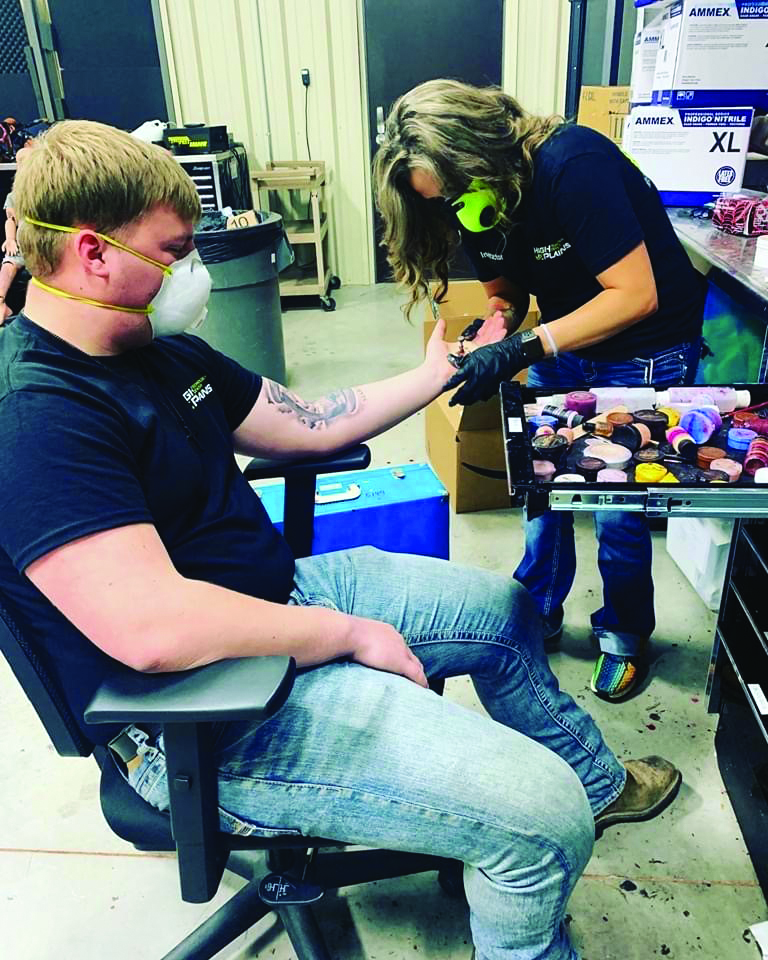
Starting before training even begins
Doing things differently begins with understanding local mandates, guidelines from the Centers for Disease Control and Prevention (CDC) and the World Health Organization (WHO), and other standards including OSHA 3990 in preparing to reopen.
At HPTC, there is a distinct and separate entrance, as well as exit to the facilities located on a technical school campus.
“Planning included identifying two separate buildings so courses and instructors can be staggered, allowing time for sanitizing before and after classes,” Burnett said.
Similarly, at Safety Technology, the training center is on a technical school campus that allowed for simplified and controlled access to the facility by trainees as well as for sanitizing.
Jones at ENSA explained that a spirit of collaboration is essential for everyone. That is why they partnered with the hotel near the training facility where trainees stay to make sure the cleaning and disinfecting protocols met their standards, including a thorough disinfection of every room after a guest checks out, making sure the employees wear masks or face coverings, and the disinfection of all common areas at least three times a day.
All three training providers also track trainees coming to their facilities 14 days before arrival. This means that all trainees fill out forms that cover potential COVID-19 symptoms, contact with individuals who have had symptoms, any travel by air, participation in gatherings of 10 or more people, and visiting any hot spot for cases identified by the CDC.
Because the instructors at Safety Technology have led courses offsite with clients, they took the initiative to maintain similar records for their instructors, and the documents are updated every two weeks.
Arriving at the centers and training begins
Nearly all trainees drive to the centers, which alleviates concerns with air travel. Upon arrival, they bring their signed form, which is reviewed for exceptions before training begins. That is followed by a temperature check for everyone.
It is essential that trainees are provided with PPE including helmets, masks and gloves. At High Plains Technology Center, trainees also bring their own harnesses and lanyards. Expectations for use of PPE and sanitizers are explained in detail by all three training providers. Instructors also have a key role in demonstrating the expectations for PPE as well as social distancing.
The ratio of trainees to instructors is reduced by all three training providers to allow for social distancing. For example, at Safety Technology, the ratio of trainees to instructors is four-to-one as compared to six-to-one.
Stations for trainees in the classrooms are at least six feet part in all cases to allow for distancing and maintaining a safe environment.
There is a natural tendency for people to want to move closer together during the training so that is why it is vital for instructors to be able to maintain social distancing. At ENSA, they have gone a step further to include a floor monitor in each classroom to oversee social distancing for a safe environment.
In all cases, training providers can lead the full GWO content of basic safety standards, which includes first aid, manual handling, fire awareness, and working at heights. The only significant change is use of mannequins in some of the hands-on training for the first aid and working at heights modules.
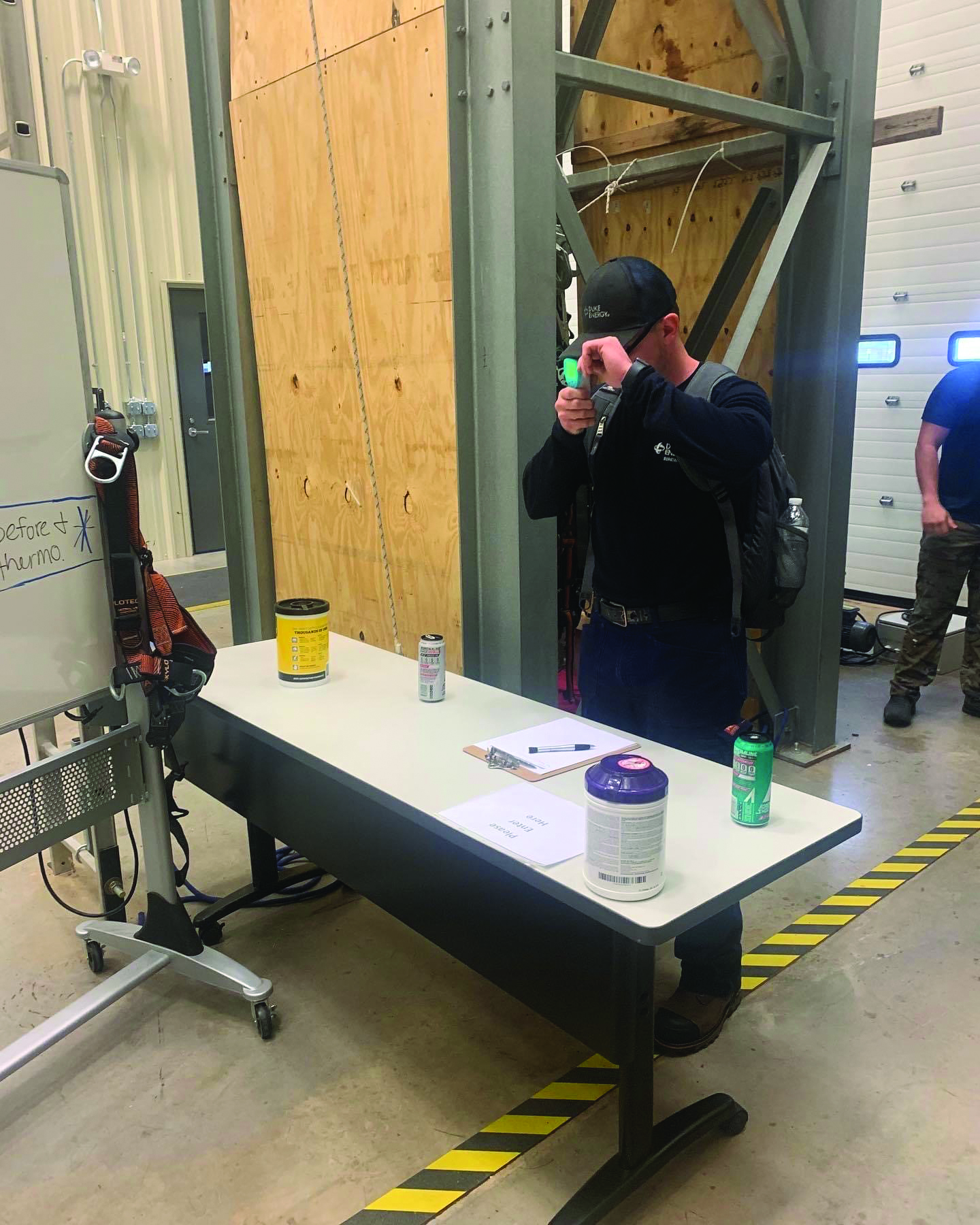
Sanitizing, sanitizing, sanitizing
When it comes to sanitizing, two areas of focus are the individuals and the equipment.
Sanitizing stations are part of the reception areas and in the classrooms for the trainees, and breaks are taken solely for sanitizing. Each of the centers also operates an extremely detailed cleaning plan.
At Safety Technology, when a trainee uses a climbing tower, it is cleaned after each use; it is cleaned after the end of each day again, and the equipment is cleaned between courses, too. A detailed cleaning plan is in place for training rooms that are sanitized multiple times each day. Records are kept to ensure all are sanitized appropriately.
Because HPTC staggers its classes, the climbing tower is used first in one session and last in the second course. This allows for cleaning before and after. In addition, the facilities’ surfaces are cleansed with a sanitizing gun twice each week. This technique has a proven past in that it was used during flu seasons and reduced cases, according to Burnett.
ENSA started by evaluating the training center for low- and high-touch locations. Examples of high-touch locations are door handles and counters, which are disinfected four times a day. Low-touch locations are sanitized daily. When it comes to equipment such as lanyards, trainees are the only ones who handle the gear over the course of a week, storing it in a locker after each day. After training is completed, the equipment is sanitized and stored for at least 48 hours.
Looking to the future optimistically
Each of the training providers reflects what is going on in the growing wind-turbine industry where hiring technicians continues to be very strong. Furthermore, these training providers noted that they are hiring instructors.
At ENSA, Jones observed, “We’re at capacity, and this is because of a collaborative effort, where everybody came up with ideas for the benefit of all.”
“High Plains Technology will have its largest numbers for year ending in June,” Burnett said. “I see an even better year ahead.”
“Our pipeline is filled at Safety Technology,” Dickens said. “We could exceed our numbers because the market is solid.”
As Jones pointed out, the key is to make sure trends are followed, watched, and understood to build forward in the right way … safely.



















